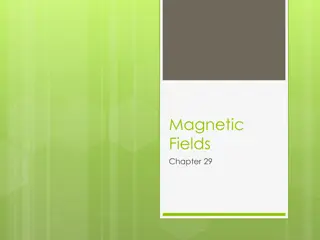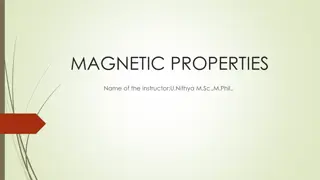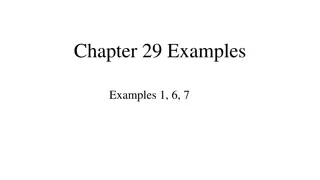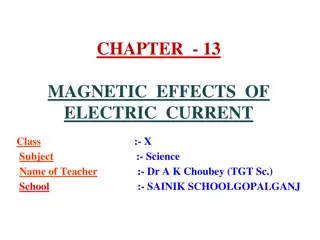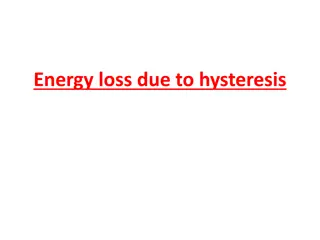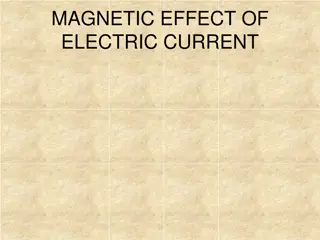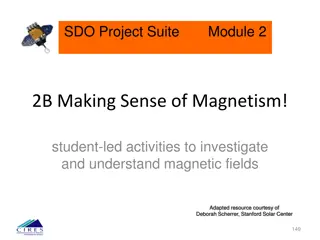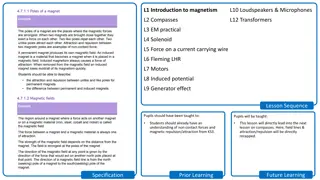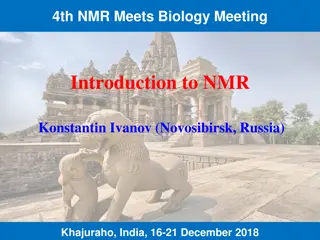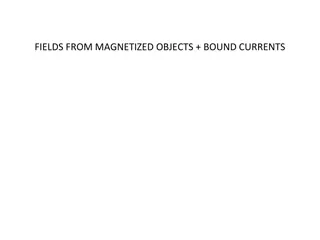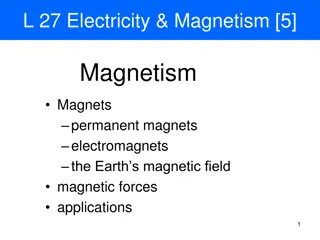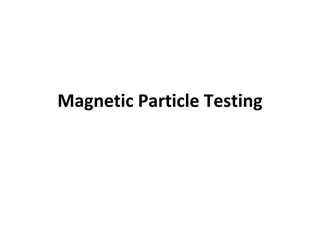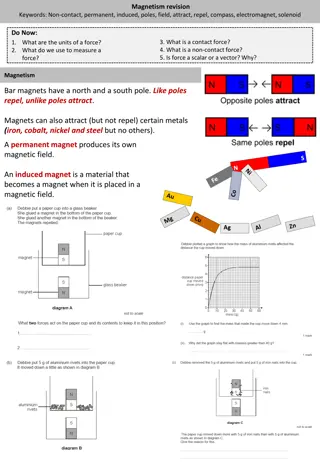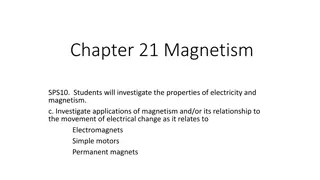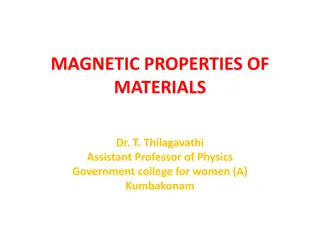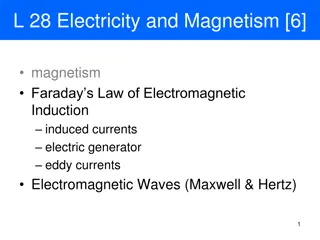Understanding Magnetism in Matter: Magnetization and Magnetic Field Strength
The magnetic state of a substance is characterized by the magnetization vector M, representing the magnetic moment per unit volume. The total magnetic field induction at a point within a substance depends on the applied field and magnetization M. Substances can be classified as paramagnetic, ferromagnetic, or diamagnetic based on their magnetic properties. Ferromagnetism involves strong magnetic effects in certain crystalline substances, while paramagnetic and diamagnetic materials exhibit different magnetic behaviors. Understanding these phenomena is essential in the study of magnetism in matter.
Download Presentation

Please find below an Image/Link to download the presentation.
The content on the website is provided AS IS for your information and personal use only. It may not be sold, licensed, or shared on other websites without obtaining consent from the author. Download presentation by click this link. If you encounter any issues during the download, it is possible that the publisher has removed the file from their server.
E N D
Presentation Transcript
Magnetism in matter Magnetization Vector, M and Magnetic Field Strength H The magnetic state of a substance is described by a quantity called the magnetization vector M. The magnitude of this vector is defined as the magnetic moment per unit volume of the substance (magnetic moment /cm3). Magnetic moment, is also called a magnetic dipole moment (Ampere)(meter)2, is a measure of the object's tendency to align with a magnetic field. Its positive direction depends on the way the object responds to the magnetic field.
The total magnetic field Induction at a point within a substance depends on both the applied (external) field and the magnetization M of the substance. Recognizing the similarity between M and H, we can write: B = o ( H+ M ) o is a constant called the permeability of free space = 4 x10-7(T. m/A) Hmagnetic field strength within the substance (A/m). The quantities H and M have the same units. Because M is magnetic moment per unit volume, its SI units are: (Ampere)(meter)2/(meter)3= ( A/m ). So, for these substances placed in an external magnetic field, we can write: M= H where (Greek letter Chi) is a dimensionless factor called the magnetic susceptibility.
Classification of Magnetic Substances Substances can be classified as belonging to one of 3 categories, depending on their magnetic properties: Paramagnetic, Ferromagnetic and Diamagnetic The two most common types of magnetism are paramagnetic and Diamagnetic, which account for the magnetic properties of most of the periodic table of elements at room temperature. Paramagnetic and ferromagnetic materials are those made of atoms that have permanent magnetic moments. Diamagnetic materials are those made of atoms that do not have permanent magnetic moments. The magnetic properties of a substance can be determined by examining its electron configuration: If it has unpaired electrons, then the substance is paramagnetic and if all electrons are paired, the substance is then diamagnetic.
Ferromagnetism A small number of crystalline substances exhibit strong magnetic effects called ferromagnetism. Some examples of ferromagnetic substances are iron, cobalt, nickel, gadolinium, and dysprosium. These substances contain permanent atomic magnetic moments that tend to align parallel to each other even in a weak external magnetic field. Once the moments are aligned, the substance remains magnetized after the external field is removed. This permanent alignment is due to a strong coupling between neighboring moments
Paramagnetism Paramagnetic substances have a small but positive magnetic susceptibility resulting from the presence of atoms (or ions) that have permanent magnetic moments. These moments interact only weakly with each other and are randomly oriented in the absence of an external magnetic field. When a paramagnetic substance is placed in an external magnetic field, its atomic moments tend to line up with the field. However, this alignment process must compete with thermal motion, which tends to randomize the magnetic moment orientations. Diamagnetism When an external magnetic field is applied to a diamagnetic substance, a weak magnetic moment is induced in the direction opposite the applied field. This causes diamagnetic substances to be weakly repelled by a magnet. Although diamagnetism is present in all matter, its effects are much smaller than those of paramagnetic or ferromagnetic.






